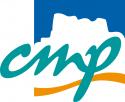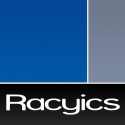UB10 Session 10
Date: Thursday 22 March 2018
Time: 12:00 - 14:30
Location / Room: Booth 1, Exhibition Area
| Label | Presentation Title Authors |
|---|---|
| UB10.1 | ARCHON: AN ARCHITECTURE-OPEN RESOURCE-DRIVEN CROSS-LAYER MODELLING FRAMEWORK Authors: Fei Xia1, Ashur Rafiev1, Mohammed Al-Hayanni2, Alexei Iliasov1, Rishad Shafik1, Alexander Romanovsky1 and Alex Yakovlev1 1Newcastle University, GB; 2Newcastle University, UK and University of Technology and HCED, IQ Abstract This demonstration showcases a modelling method for large complex computing systems focusing on many-core types and concentrating on the crosslayer aspects. The resource-driven models aim to help system designers reason about, analyse, and ultimately design such systems across all conventional computing and communication layers, from application, operating system, down to the finest hardware details. The framework and tool support the notion of selective abstraction and are suitable for studying such non-functional properties such as performance, reliability and energy consumption. More information ... |
| UB10.2 | FPGA-BASED HARDWARE ACCELERATOR FOR DRUG DISCOVERY Authors: Ghaith Tarawneh, Alessandro de Gennaro, Georgy Lukyanov and Andrey Mokhov, Newcastle University, GB Abstract We present an FPGA-based hardware accelerator for drug discovery, developed during the EPSRC programme grant POETS (EP/N031768/1) in partnership with e-Therapeutics, an Oxford based drug discovery company. e-Therapeutics is pioneering a novel form of drug discovery based on analyzing protein interactome networks (https://www.youtube.com/watch?v=wQFpTtuzrgA). This approach can discover suitable drug candidates much more efficiently compared to wet lab testing but requires considerable computing power, particularly because commodity computers are generally inefficient at analyzing large-scale networks. The presented accelerator, consisting of an FPGA board with a silicon-mapped protein interactome plus accompanying software formalisms and tools, can deliver a 1000x speed up in this application compared to software running on commodity computers. We will showcase demos in which we run in-silico analysis of protein interactomes to test drug effects and visualize the results in real-time. More information ... |
| UB10.3 | ADVANCED SIMULATION OF QUANTUM COMPUTATIONS Authors: Zulehner Alwin and Robert Wille, Johannes Kepler University Linz, AT Abstract Quantum computation is a promising emerging technology which allows for substantial speed-ups compared to classical computation. Since physical realizations of quantum computers are in their infancy, most research in this domain still relies on simulations on classical machines. This causes an exponential overhead which current simulators try to tackle with straight forward array-based representations and massive hardware power. There also exist solutions based on decision diagrams (graph-based approaches) that try to tackle the complexity by exploiting redundancies in quantum states and operations. However, they did not get established since they yield speedups only for certain benchmarks. Here, we demonstrate a new graph-based simulation approach which clearly outperforms state-of-the-art simulators. By this, users can efficiently execute quantum algorithms even if the respective quantum computers are not broadly available yet. More information ... |
| UB10.4 | RISC-V PROCESSOR MODELING IN IP-XACT USING KACTUS2 Authors: Esko Pekkarinen and Timo Hämäläinen, Tampere University of Technology, FI Abstract The complexity of modern embedded system design is managed by advanced, high-level design methodologies such as IP-XACT. However, integrating IP-XACT as a part of an existing design flow and packaging legacy sources is too often inhibited by the inherit differences between IP-XACT and the traditional hardware description languages. In this work, we take an existing Verilog implementation of a RISC-V microprocessor and package it with our open-source IP-XACT tool Kactus2. The resulting IP-XACT description will be publicly available and based on the modeling experience we report the observed pitfalls in the transition from HDL to IP-XACT. More information ... |
| UB10.5 | RECONFIGURABLE SELF-TIMED DATAFLOW ACCELERATOR Authors: Danil Sokolov, Alessandro de Gennaro and Andrey Mokhov, Newcastle University, GB Abstract Many applications require reconfigurable pipelines to handle incoming data items differently depending on their values or the operating mode. Currently, reconfigurable synchronous pipelines are the mainstream of dataflow accelerators. However, there are certain advantages to be gained from self-timed dataflow processing, e.g. robustness to unstable power supply, data-dependent performance, etc. To become attractive for industry, reconfigurable asynchronous pipelines need a formal behavioural model and design automation. This demo will present a design flow for the specification, verification and synthesis of reconfigurable self-timed pipelines using Dataflow Structure formalism in Workcraft(https://workcraft.org/). As a case study we will use an asynchronous accelerator for Ordinal Pattern Encoding(OPE) with reconfigurable pipeline depth. We will exhibit the resultant OPE chip fabricated in TSMC90nm to show the benefits of reconfigurability and asynchrony for dataflow processing. More information ... |
| UB10.6 | TTOOL/OMC: OPTIMIZED COMPILATION OF EXECUTABLE UML/SYSML DIAGRAMS FOR THE DESIGN OF DATA-FLOW APPLICATIONS Authors: Andrea Enrici1, Julien Lallet1, Renaud Pacalet2 and Ludovic Apvrille2 1Nokia Bell Labs, FR; 2Télécom ParisTech, FR Abstract Future 5G networks are expected to increase data rates by a factor of 10x. To meet this requirement, baseband stations will be equipped with both programmable (e.g., CPUs, DSPs) and reconfigurable components (e.g., FPGAs). Efficiently programming these architectures is not trivial due to the inner complexity and interactions of these two types of components. This raises the need for unified design flows capable of rapidly partitioning and programming these mixed architectures. Our demonstration will show the complete system-level design and Design Space Exploration, based on UML/SysML diagrams, of a 5G data-link layer receiver, that is partitioned onto both programmable and reconfigurable hardware. We realize an implementation of such a UML/SysML design by compiling it into an executable C application whose memory footprint is optimized with respect to a given scheduling. We will validate the effectiveness of our solution by comparing automated vs manual designs. More information ... |
| UB10.7 | USING FORMAL METHODS FOR AUTOMATIC PLATFORM-INDEPENDENT CODE GENERATION OF RUN-TIME MANAGEMENT Authors: Mohammadsadegh Dalvandi, Michael Butler and Asieh Salehi Fathabadi, University of Southampton, GB Abstract Run-Time Management (RTM) systems are used in embedded systems to dynamically adapt hardware performance to minimise energy consumption. In this demonstration, we present a framework for automatic generation of RTM implementations from platform-independent formal models. The methodology in designing the RTM systems uses a high-level mathematical language, Event-B, which can describe systems at different abstraction levels. A code generation tool is used to translate platform-independent Event-B RTM models to platform-specific implementations in C. Formal verification is used to ensure correctness of the Event-B models. The portability offered by our methodology is demonstrated by modelling a Reinforcement Learning (RL) based RTM and generating implementations for two different platforms that all achieve energy savings on the respective platforms. The generated RTM code has been integrated with the PRiME framework, a cross-layer framework for embedded power management. More information ... |
| UB10.8 | IIP GENERATORS TO EASE ANALOG IC DESIGN Authors: Benjamin Prautsch, Uwe Eichler and Torsten Reich, Fraunhofer Institute for Integrated Circuits IIS/EAS, DE Abstract Semiconductor technology has shown significant progress over the last decades. Digital EDA (electronic design automation) allowed that this progress could be converted to high-performance digital ICs. Analog components are part of Systems-on-Chip (SoC) too, but analog EDA lags far behind. Therefore, a lot of effort was spent to automate analog IC design. Mayor results are constraint-based layout-aware optimization tools using predefined layout templates or pure automation as well as analog generators containing expert knowledge. While optimization is a holistic top-down approach, generators allow parameterized and fast bottom-up generation of critical schematic and layout parts, pre-planned by experienced designers. With IIP Generators, we follow three use cases to ease analog design: 1) design on higher hierarchy levels, 2) development of hierarchical high-level IIPs, and 3) automated design porting due to highly technology-independent blocks down to 22nm. More information ... |
| UB10.9 | ABSYNTH: A COMPREHENSIVE APPROACH TO FRONT TO BACK ANALOG BLOCK DESIGN AUTOMATION Authors: Abhaya Chandra Kammara S.1, Sidney Pontes-Filho2 and Andreas König2 1ISE, TU Kaiserslautern, DE; 2University of Kaiserslautern, DE Abstract ABSYNTH was first presented in CEBIT 2014 where complete, practical circuit sizing approaches have been shown using meta-heuristics on trusted simulators. This tool was then proven by its use in design of several cells in a research project. Here, we present the extension to our nested optimization approach that creates a symmetric and well matched layout in every step for every instance in the population of the swarm, that is extracted in our flow to provide feedback to the cost function impacting on the population update for more viable and robust circuits. The layout optimization presented in this DEMO works with Cadence Layout design tools. Our initial focus is, motivated by Industry 4.0, IoT, on cells for signal conditioning electronics with reconfigurability and Self-X features.[1] Abhaya C. Kammara, L.Palanichamy, and A. König, "Multi-Objective optimization and visualization for analog automation", Complex. Intell. Syst, Springer, DOI 10.1007/s40747-016-0027-3, 2016 More information ... |
| 14:30 | End of session |
| 15:30 | Coffee Break in Exhibition Area
On all conference days (Tuesday to Thursday), coffee and tea will be served during the coffee breaks at the below-mentioned times in the exhibition area (Terrace Level of the ICCD). Lunch Breaks (Großer Saal + Saal 1)On all conference days (Tuesday to Thursday), a seated lunch (lunch buffet) will be offered in the rooms "Großer Saal" and "Saal 1" (Saal Level of the ICCD) to fully registered conference delegates only. There will be badge control at the entrance to the lunch break area. Tuesday, March 20, 2018
Wednesday, March 21, 2018
Thursday, March 22, 2018
|











